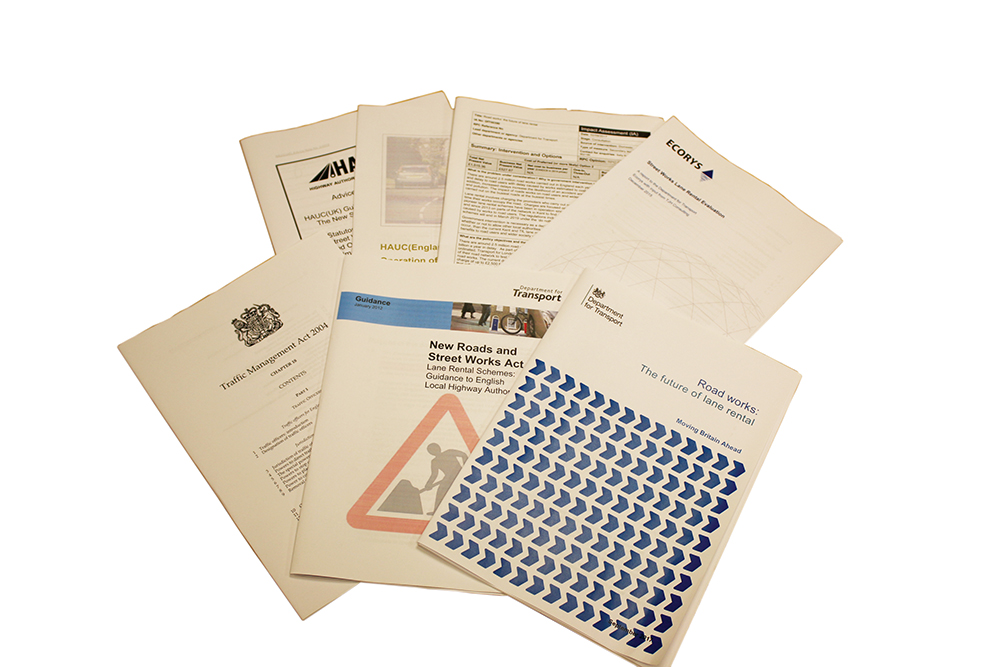 During February, the Department for Transport published the result of a consultation regarding Street Works Charges across England, which had taken place during September & October last year. Below, Glenn Cartledge, left, MD of trenchless technology supplier Source One Environmental (S1E), explains the changes.
During February, the Department for Transport published the result of a consultation regarding Street Works Charges across England, which had taken place during September & October last year. Below, Glenn Cartledge, left, MD of trenchless technology supplier Source One Environmental (S1E), explains the changes.
It has been estimated that there are around 2.5 million road works undertaken annually throughout England alone, costing the economy around £4 billion due to disruption and congestion – an issue that has caught the Government’s eye.1
The Government introduced new legislation in 1991 in the form of the New Roads and Street Works Act 1991 (NRSWA) that opened up the way for the existence of permit schemes. Localised Regulations then followed in England, Scotland, Wales and Northern Ireland.
The purpose of the legislation was for Local Authorities to gain greater control of street works to tackle the problem. The English guidance notes state the objectives as to:
- reduce the length of time that work sites are unoccupied;
- improve planning and coordination between contractors;
- carry out more works outside of peak periods;
- optimise the number of operatives on site so works are completed quicker; and
- have works completed to the required standard first time.2
The legislation was therefore designed to have a direct impact on the working practices of Utility Company Contractors.
Schemes vary widely across the four territories and between Local Authorities. There are four broad types of scheme: Noticing schemes where works are simply reported to the LHA; Permit schemes where the permit is applied and paid for and which may include specific conditions; Over-run Charges which are applied only where works have gone beyond an agreed timeframe; and Lane Rental Schemes.
Lane Rental Schemes (LRS) are the newest type. They allow the LHA to charge a daily fee of up to £2,500 per day when the highway is occupied. Two pioneer schemes – in London since 2012 and Kent since 2013 – are operating.
The recent consultation3 assessed whether such schemes could be rolled out further – and the result was a ‘yes’.
The London & Kent schemes will be allowed to continue. Other LHA’s can now apply to the Secretary of State to implement such a scheme. Approval would be subject to certain conditions:
- Authorities would need to have a well-run permit scheme
- Schemes would apply to a local authority’s own works as well as to Utility Companies.
- Lane rental charges should be used to incentivise work outside of peak times, waived for joint works and caps are put in place for major works to install and replace apparatus.
- Schemes are trialled before ‘going live’ and reviewed annually to ensure charges remained proportionate and are applied to the most congested roads.
As the above only applies to England, it will be interesting to see any reaction, interest or discussion within Holyrood, Cardiff or Stormont.
Working with charges
Where charging schemes are extended, it will be in the interest of utility companies to find effective ways to repair their network that can reduce time on site or avoid closing highways completely.
Working out of hours explicitly achieves some of the Government’s key aims – but contractors will need to look closely at the effects this will have on their staff and operations.
Examining the knock-on effect on staff contracts and wellbeing would be a good place to start. Reviewing whether a team is fully equipped for night working might be another route, for example is more equipment needed in the form of lighting?
Products that are time-saving on site will become even more attractive as their cost is outweighed by greater savings on the cost of permits.
This is where we see a significant win for trenchless technologies, whether patching or lining to fully reinstate failing pipework. Trenchless technologies involve no excavation at all, but access the network for repair via the nearest manhole.
The growth of such methods could be the ultimate winner as permit and lane rental schemes become even more widespread. Good quality, independently-approved products are already out there and have been tried and tested over the last decade. Training for crews who are as yet unfamiliar in these techniques is also readily available.
Given the governmental desire for the extension of permit schemes – are your contractors prepared?
1 Road works: The future of lane rental. Moving Britain ahead (Dept for Transport, Sept 2017)
2 New Roads and Street Works Act 1991. Lane Rental Schemes: Guidance to English Local Highway Authorities (Dept for Transport, Jan 2012)
3 Government response to consultation on the future of lane rental – Moving Britain Ahead (Dept for Transport, Feb 2018)



